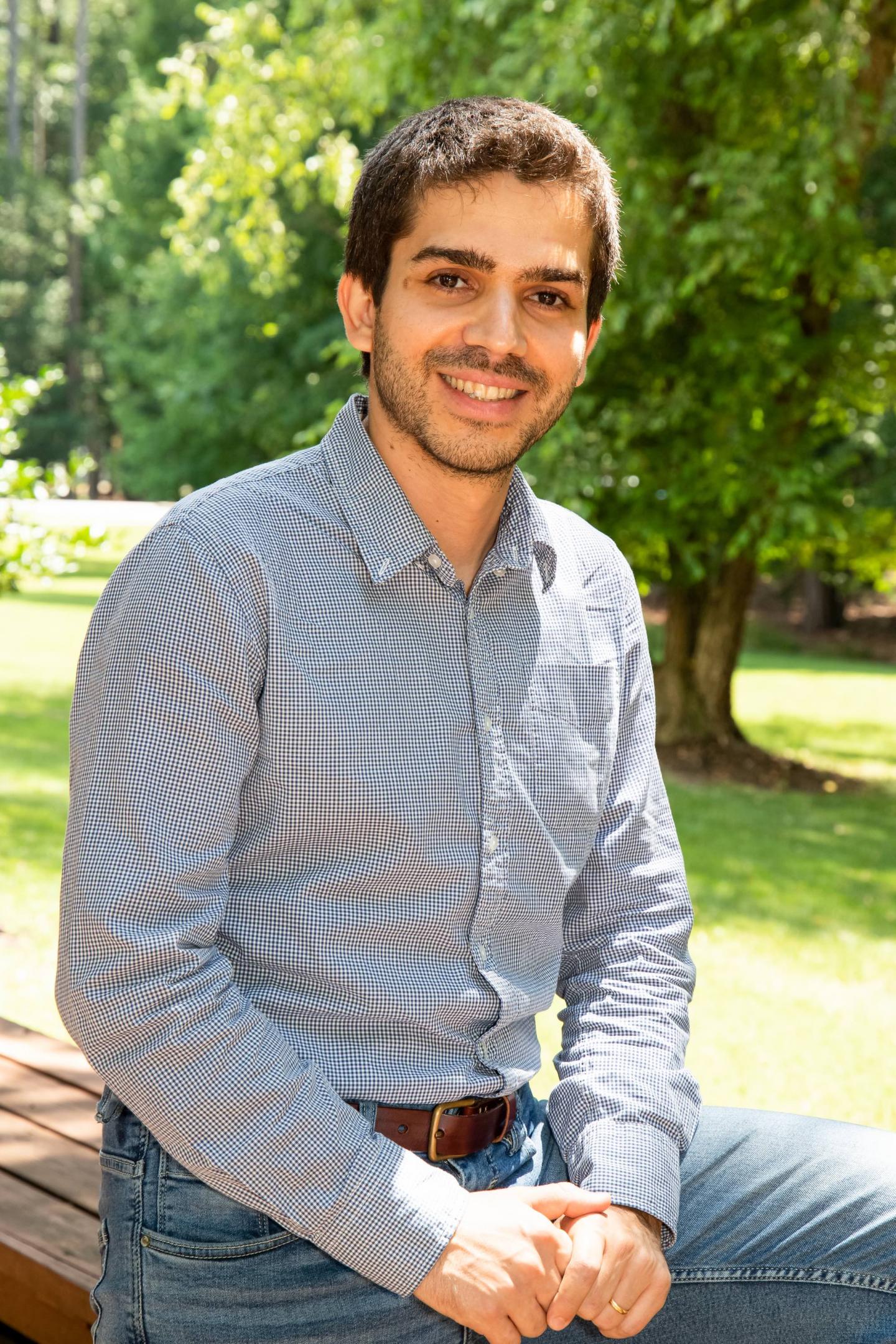Theorist Andrea Signori wins the 2019 JSA Postdoctoral Prize for work to explain how quarks build particles

Credit: DOE’s Jefferson Lab
A goal of the Department of Energy’s Thomas Jefferson National Accelerator Facility is to learn more about particles known as quarks. But those studies are complicated by the nature of quarks themselves. Despite being the fundamental building blocks of everyday matter, a single quark has never been directly observed in a physics experiment.
When Jefferson Lab researchers shoot the Continuous Electron Beam Accelerator Facility’s electron beam at a proton or neutron, it briefly frees the quarks. But as soon as a quark is liberated, it combines with others of its kind to form new particles. Particles made up of quarks are called hadrons (including protons and neutrons), giving this process the name hadronization.
The details of this process, however, are still largely a mystery. Andrea Signori, a postdoctoral researcher at Argonne National Laboratory, wants to change that. His project, called “Unraveling Hadronization,” has won Signori the 2019 Jefferson Science Associates Postdoctoral Prize.
Hadronization complicates nuclear physics experiments, because it means that by the time the quarks released by the electron beam reach the experiment detector, they’re not just single quarks–they’re already hadrons. Researchers end up with a spray of hadrons in the detector instead of a bunch of liberated quarks. To understand more about the quarks that make up protons or neutrons, researchers also need to understand hadronization.
“Hadronization is an additional process that you have to disentangle from the study of hadron structure, but the problem is that we don’t really understand hadronization very well yet,” Signori said.
He’s tackling the mystery of hadronization by improving on the theory that describes this process. He’ll include forthcoming and existing data collected from accelerator experiments all over the world, including the Belle experiment at the High Energy Accelerator Research Organization in Japan, the BES experiment at the Institute of High Energy Physics in China, and the BaBar experiment at SLAC National Accelerator Laboratory.
“My proposal is related to understanding so-called fragmentation functions,” Signori said.
Fragmentation functions describe the probability that a particular hadron found in the detector originates from a particular quark. Signori wants to improve these fragmentation functions to make them more accurate, which would give physicists more confidence that a certain quark from a certain proton or neutron showed up in the detector as a particular hadron.
“These functions are going to be important for the Jefferson Lab program,” Signori said.
The Jefferson Lab User Organization Board of Directors have awarded the JSA Postdoctoral Prize since 2008. The group represents the scientists who come to Jefferson Lab to conduct research with its unique facilities. The board judges each applicant on their record of accomplishment in physics, proposed use of the research grant, and the likelihood of further accomplishments in the Jefferson Lab research fields.
“This year again, all applicants did an excellent job identifying compelling projects and writing competitive proposals. So, the choice was quite difficult for the selection committee,” said Julie Roche, the 2018-2019 Jefferson Lab User Organization chair and professor at Ohio University. “I want to thank the selection committee, led by University of Virginia Professor Kent Paschke, for its careful work. And I want to also thank JSA for funding the prize once again.”
The grant is funded by the Jefferson Science Associates Initiatives Fund program, which JSA provides to support programs, initiatives and activities that further the scientific outreach, and promote the science, education and technology missions of Jefferson Lab and benefit the laboratory’s user community.
“I feel really flattered to be selected for this prize,” said Signori. “I’m very grateful to JSA, of course. I hope I will be able to do a good job and exceed expectations.”
Signori plans to put the $10,000 prize money toward supporting up to two Ph.D. students to help work on the project for four months.
“I like teaching,” he said. “Something I would like to do in the future is to start transferring the skills and knowledge I have to other people, because that is what actually keeps the research moving forward.”
Signori started investigating hadronization after he finished his Ph.D. and began working as a postdoctoral researcher at Jefferson Lab. While currently a postdoctoral researcher at Argonne National Laboratory, Signori is returning to Jefferson Lab in September 2019 to begin the Marie Sklodowska-Curie Fellowship through the European Commission, which allows researchers to conduct research across international boundaries. For the fellowship, Signori will first spend two years at Jefferson Lab, and then one year at the University of Pavia, which is also where he earned his undergraduate degree.
“I’m very happy to keep collaborating with the people here at Jefferson Lab, and I’m happy that I’m doing something that can contribute to the Jefferson Lab physics program,” said Signori. “That’s the bottom line.”
###
Contact: Kandice Carter, Jefferson Lab Communications Office, 757-269-7263, [email protected]
Jefferson Science Associates, LLC, a joint venture of the Southeastern Universities Research Association, Inc. and PAE, manages and operates the Thomas Jefferson National Accelerator Facility, or Jefferson Lab, for the U.S. Department of Energy’s Office of Science.
Jefferson Lab is supported by the Office of Science of the U.S. Department of Energy. The Office of Science is the single largest supporter of basic research in the physical sciences in the United States, and is working to address some of the most pressing challenges of our time. For more information, please visit science.energy.gov.
Media Contact
Kandice Carter
[email protected]
Original Source
https:/




